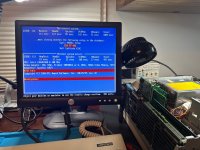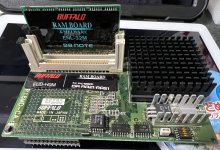View attachment 1265533
Finally. Finally. I think the highest Top Bench I have seen for an Inboard 386 in an XT was 95, but I could be mistaken and please correct me. So the above is what I achieved tonight, I will figure out how to fit the 4mb board in it tomorrow. Obviously I can't, run this inside the case as you can see my upgrade stack popping out of the top. The secret sauce was to swtich from a 486Now! to the Kyoto Turbo 486EX66.
Computer Base Model: Vendex 888-XT
Bus Clock: 20 Mhz / 3 = 6.67 MHz (8 Mhz doesn't work with my Inboard for some reason)
Inboard Clock: 41 MHz / 2 = 20.5 MHz Base CPU Clock
386 to 486: Kyoto Turbo 486EX66
Kyoto Clock Multiplier: 2X
Base Clock to 486: 41 Mhz
486 CPU on Kyoto: Evergreen Technologies 5x86
5x86 Multiplier: 4X
5x86 Internal Clock: 164 MHz
Topbench Score: 112
I can tell it is a speed demon. I got some garbled graphics on Wolfenstein which isn't a great sign. I did manage to play Epic Pinball and that was smooth as silk. I also used Inertia Player to play mods through PC Speaker and could run the scopes or the Fourier. Will try more tomorrow. I am tired.
Chris


